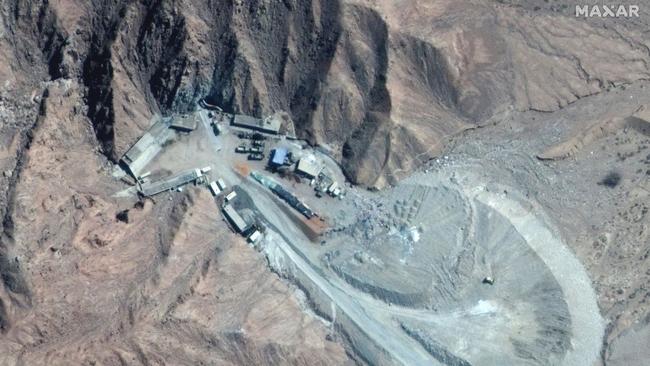US fears sly China nuclear tests
China might be secretly conducting nuclear tests with very low explosive power, despite assertions to the contrary.

China might be secretly conducting nuclear tests with very low explosive power, despite Beijing’s assertions that it is strictly adhering to an international accord banning all nuclear tests.
An arms control report to be made public by the US State Department doesn’t present proof China is violating its promise to uphold the agreement, but it cites an array of activities that “raise concerns” that Beijing might not be upholding the “zero-yield” nuclear weapons testing ban.
The concerns stem from the high tempo of activity at China’s Lop Nur test site, extensive excavations at the site and China’s purported use of special chambers to contain explosions.
The Trump administration’s allegation is included in an unclassified summary of an annual review of international compliance with arms control accords. The review is likely to add to strains over China’s handling of the coronavirus pandemic, its militarisation of the South China Sea and trade disputes.
It also comes as President Donald Trump is seeking to open nuclear arms talks with Beijing in the hope of negotiating a new nuclear deal that also includes Russia and covers all nuclear weapons.
The agreement at the core of the dispute is the Comprehensive Nuclear Test Ban Treaty, which was concluded in 1996. The accord allows a range of activities to assure the safety and reliability of nuclear weapons, including experiments involving fissile material, as long as they don’t produce a nuclear-explosive yield.
The treaty isn’t legally in force because not enough nations have ratified it, though major powers, including the US and China, say they are abiding by its terms. While the US and China have signed the agreement, neither has ratified it.
One activity that has fed US suspicions has been interruptions in the flow of data in past years from monitoring stations in China that measure radioactive particles and seismic tremors. The stations are part of an international network of hundreds of sites set up to verify compliance with the test-ban treaty. Participating nations are responsible for running the stations and have been voluntarily transmitting data to the Vienna-based organisation that is to oversee the accord as the agreement has yet to formally go into effect.
A spokeswoman for the Comprehensive Nuclear-Test-Ban Treaty Organisation (CTBT) said there has been virtually no interruption in the data transmissions by the Chinese since September 2019. Data transmissions were interrupted previously, she said, but that was the result of the negotiating process between the CTBT organisation and Beijing on arrangements for putting the stations in operation.
“Data transmission from all certified stations was interrupted in 2018 after the testing and evaluation and certification process was completed, ” she said. “In August 2019, ongoing negotiations on post-certification activity contracts with Chinese station operators were concluded and data transmission resumed for all five certified stations.”
In contrast, the administration’s report accuses China of “blocking the flow of data from the monitoring stations”.
China’s arsenal is estimated to be about 300 nuclear warheads. The US has a stockpile of 3800 nuclear warheads that could be carried on long-range and short-range delivery systems, but only 1700 are deployed.
Arms Control Association executive director Daryl Kimball said activity at Lop Nur is not proof the Chinese have been engaging in low-yield testing.
“The most effective way to resolve concerns about very low-yield nuclear explosions and enforce compliance with the 1996 Comprehensive Nuclear Test Ban Treaty is for the United States — and China — to ratify the treaty and help bring it into force,” he said. “When it does, states have the option to demand intrusive, short-notice on-site inspections.”
The Wall Street Journal



To join the conversation, please log in. Don't have an account? Register
Join the conversation, you are commenting as Logout